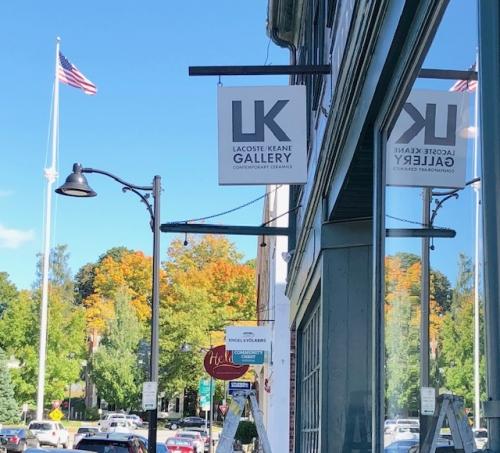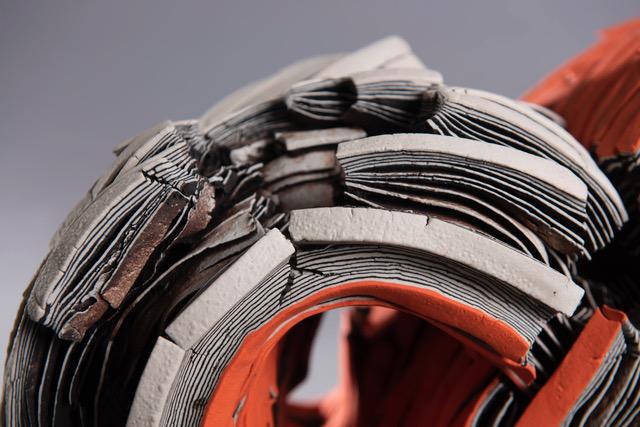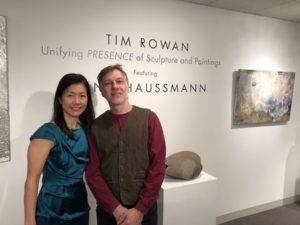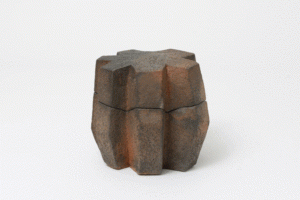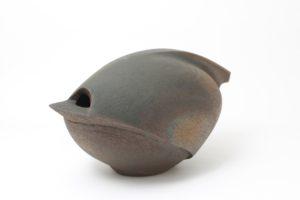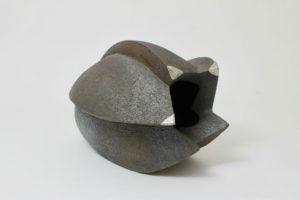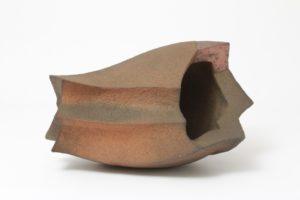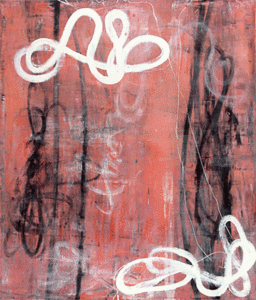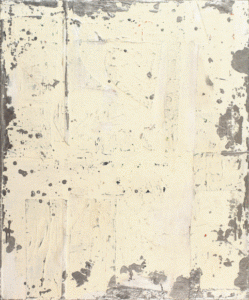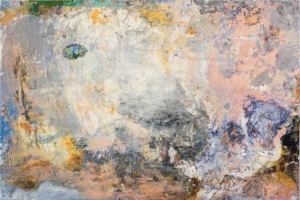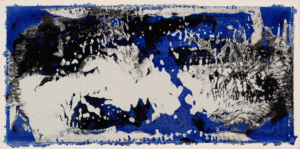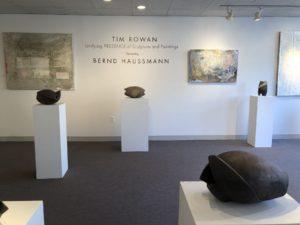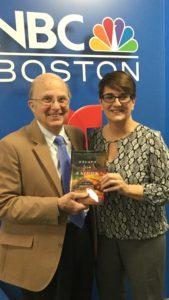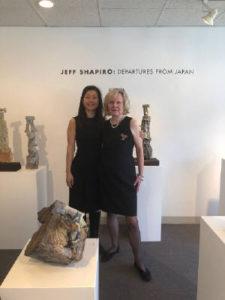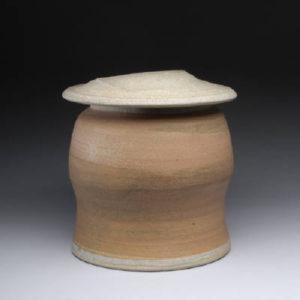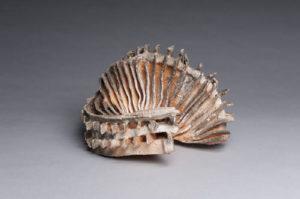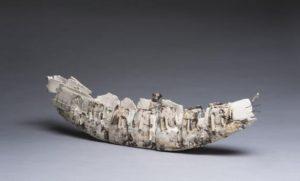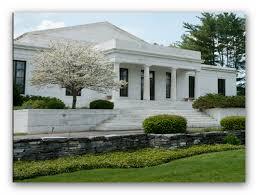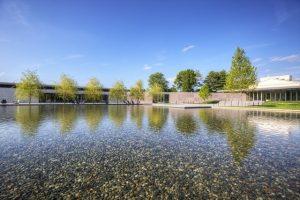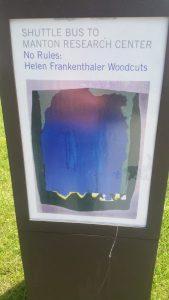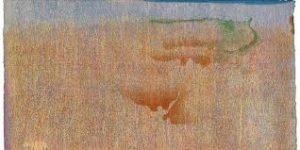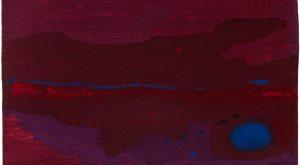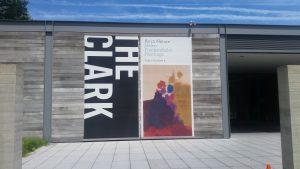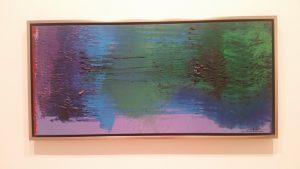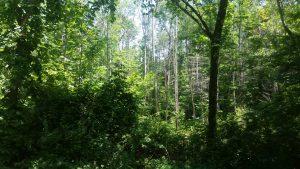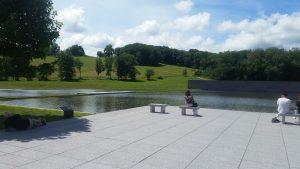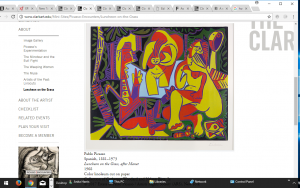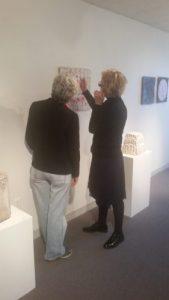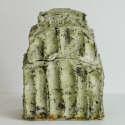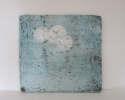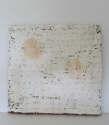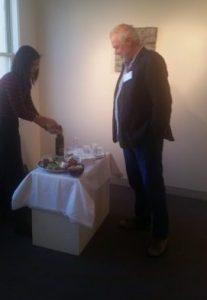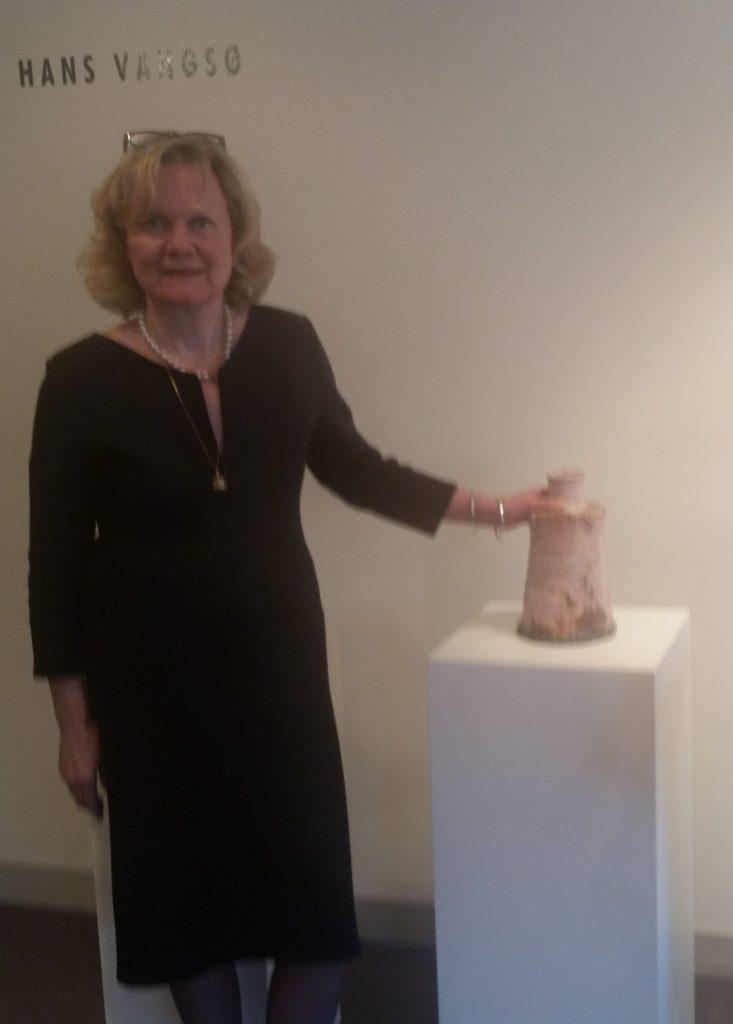With all of the sturm, drang, disruption and depression in Cambridge last week after Donald Trump was elected President, I thought I’d retreat to upstate New York to commune with nature and art.
The nature went well, 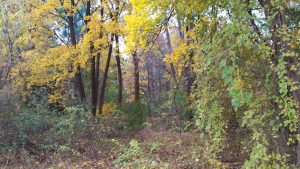 but as it turned out, there was a shooting, probably gang-related, at Crossgates Mall, not far from my family home. There was news of hate crimes in New York and elsewhere. And I arrived at the Tang Museum at Skidmore College a few minutes too late for a community discussion of the election and its aftermath.
but as it turned out, there was a shooting, probably gang-related, at Crossgates Mall, not far from my family home. There was news of hate crimes in New York and elsewhere. And I arrived at the Tang Museum at Skidmore College a few minutes too late for a community discussion of the election and its aftermath.
The discussion had been held beneath an installation called “Flag Exchange,” comprised mainly of torn American flags. The flags collected as part of a multi-year project in which artist Mel Ziegler traveled across the US— offering new replacement flags for tattered ones flying at homes, post offices, businesses, and other public locations. 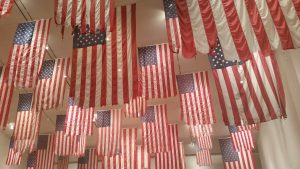 The exhibit also included picnic tables painted red, white, and blue–all aimed at provocation and one would hope thoughtful dialogue on the current state of democracy.
The exhibit also included picnic tables painted red, white, and blue–all aimed at provocation and one would hope thoughtful dialogue on the current state of democracy.
After accepting the gift of a safety pin (the post-Trump election symbol of solidarity with those who have experienced racism, homophobia, xenophobia and such), I did manage to escape somewhat into art in a wonderfully expansive exhibit called “Six-fold Symmetry: Pattern in Art and Science,” curated by Skidmore faculty from a variety of disciplines.*
Among my favorite pieces were:
Drawing Memory, 2016, a wall-sized installation in which Nigerian artist Victor Ekpuk (b. 1964) uses white chalk on 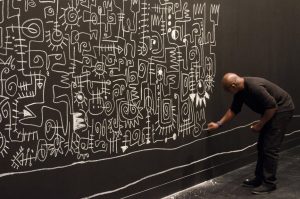 black-painted background to evoke and build on his understanding of Nsibidi, an African art form used by the secret Ekpe, or (Leopard Society). Art history Professor Emeritus Lisa Aronson writes that while he remains an outsider to the society, Ekpuk’s work resembles the dense and crowded aesthetic of Nsibidi (which is often played out on cloth) giving his viewers a complex display of imagery to decode. Ekpuk’s wall drawings mirror Nsibidi’s impermanent and performative nature, both in his preferred use of an erasable chalk medium and his practice of removing the murals from the wall at the end of exhibition.
black-painted background to evoke and build on his understanding of Nsibidi, an African art form used by the secret Ekpe, or (Leopard Society). Art history Professor Emeritus Lisa Aronson writes that while he remains an outsider to the society, Ekpuk’s work resembles the dense and crowded aesthetic of Nsibidi (which is often played out on cloth) giving his viewers a complex display of imagery to decode. Ekpuk’s wall drawings mirror Nsibidi’s impermanent and performative nature, both in his preferred use of an erasable chalk medium and his practice of removing the murals from the wall at the end of exhibition.
First Family–Hexagon, 2010
Iranian born Monir Farmanfarmaian (b.1924) synthesizes Persian history and artistic traditions and western geometrical abstraction in her mirrored sculpture “Hexagon.” According to Computer Science Professor Michael Eckman, the calculation and geometry of 14th century mosaics are closely tied to Sufism, the mystical aspect of Islam, and its sacred numerology. As Farmanfarmaian explains, “The six sides of the hexagon are the directions, forward, backward, right, left, up, down. 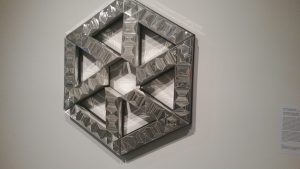 The hexagon also reflects the six virtues: generosity, self-discipline, patience, determination, insight and compassion. All the mosques in Iran, with all the flowers and the leaves and the curves and so on are based on hexagons. For me, everything connects with the hexagon.”
The hexagon also reflects the six virtues: generosity, self-discipline, patience, determination, insight and compassion. All the mosques in Iran, with all the flowers and the leaves and the curves and so on are based on hexagons. For me, everything connects with the hexagon.”
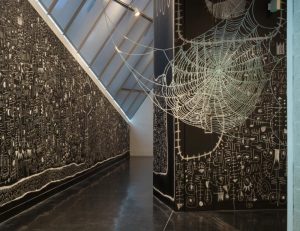 Arachna’s Arcade, 2008, by Providence, RI, sculptor Dean Snyder (b. 1955) is a “drawing in space,” of a spider web. Its “silk” is composed of highly-polished steel–which makes the web appear almost photographic in that it transposes the outside garden into the Tang gallery, curator Rachel Seligman, associate professor of mathematics, points out.
Arachna’s Arcade, 2008, by Providence, RI, sculptor Dean Snyder (b. 1955) is a “drawing in space,” of a spider web. Its “silk” is composed of highly-polished steel–which makes the web appear almost photographic in that it transposes the outside garden into the Tang gallery, curator Rachel Seligman, associate professor of mathematics, points out.
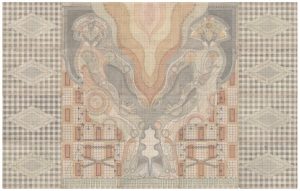
Energy Scaffolds and Information Architecture (Return to Formlessness), 2015 With use of color pencil, graphite and architectural stencils on antique ledger book pages, the intricate drawings of American artist Louise Despond (b. 1983) emerge “organically”, beginning with a few marks on paper but with no formal plan. “Each drawing is a process of discovery, with a larger, universal force guiding the emerging patterns. This intuitive process generates imagery that is symmetrical, highly geometric and possessed of an expressive energy that she feels is connected both the spiritual realm and to nature,” Seligman writes.
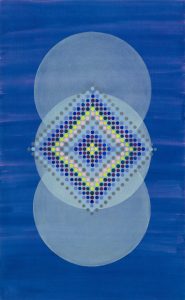
Hours 1-8, 2016. In this series of oil paintings on linen, Grace DeGennera (b. 1956 ) “explores the ways we experience the passage of time.” As Roe-Dale points out, DeGennera uses “iteration” to depict this movement, not unlike the way in which mathematicians iterate a model (as Gravner and Griffeath did to generate their “snowfake”, described below). “Time that progresses discretely is visualized in her beads of pigment, suggesting a clock ticking …hour by hour,” Roe-Dale writes. “From afar, however, the series evokes the continuous unbroken flow of time from past to future, through the loosely brushed washes of color in the backgrounds, which reflect the shifting light as day turns into night.”
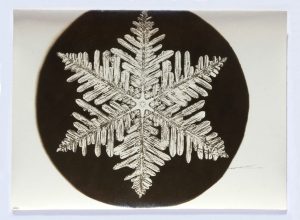
Bentley “photo” of real snowflake
Wilson Bentley’s “Snowflakes” 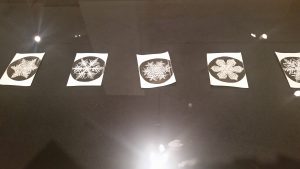 are captured through novel
are captured through novel
photomicrosopy techniques he developed starting in 1885. Bentley (1865-1931) a farmer and amateur meteorologist, was the first to photograph a single snow crystal. According to Roe-Dale, Bentley’s work responds to the 1611 inquiry of German mathematician and astronomer Johannes Kepler’s into the genesis of forms and to his theories about he origin of the intricate hexagonal pattern of the delicate snowflake structure.
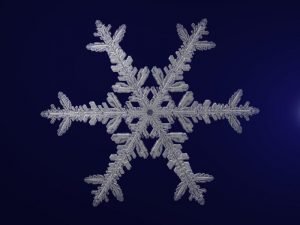
Snowfake
Snowfakes
In 2016, Janka Gravner (b. Slovenia, 1960) and David Griffeath (b. US, 1948) used a mathematical model to computationally generate what they call “snowfakes.”. A goal was to investigate the formation of snow crystals and perhaps to advocate for the human ability to replicate natural, ordered beauty with deliberate, algorithmic design. According to Roe-Dale, Gravner and Griffeath used the methods of cellular automation to account for physical variables such as temperature, pressure and water vapor density in modelling the diffusive, freezing, attachment and melting actions of individual water molecules in a matrix of three dimensional space. They came up with more than 80 types of snowflake crystals generated by nature, thus providing insight into the form and design of ice and other crystalline solids.
*
Thomas Bansted’s “Last of the Dreadnaughts,” 2011-2012, (below) is based on “Dazzle,” a pattern of disruption conceived by British artist Norman Wilkinson in 1917. During World War I, Wilkinson commanded a unit in the Royal Academy, in which artists and students created bold patterns used on ships to make it difficult for submarines to predict boats’ paths or aim weapons.
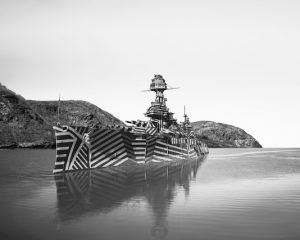 In “Dreadnaughts,” Bangsted, (b. Denmark, 1976) created a series of large-scale digitally-assembled photographs of World War I ships. Associate Art Professor Sarah Sweeney writes that in his manipulations, Bangsted applies a Dazzle pattern that “highlights the incongruity of the ship with its background”–breaking up the form of the ship and concealing its identity.
In “Dreadnaughts,” Bangsted, (b. Denmark, 1976) created a series of large-scale digitally-assembled photographs of World War I ships. Associate Art Professor Sarah Sweeney writes that in his manipulations, Bangsted applies a Dazzle pattern that “highlights the incongruity of the ship with its background”–breaking up the form of the ship and concealing its identity.
As explained on the Tang Website, Patterns, systems, and networks are all around us, and in this digital age we are increasingly aware of their influence on our lived experience. This exhibition explores some of the ways in which human beings create and manipulate patterns, and why we are intrinsically driven to do so. Patterns allow us to understand and predict complex natural and cultural phenomena, and to create artworks and other structures of surprising complexity and unity.
Yet the exhibit also shows that in nature–as in snowflakes and spider webs–while amazing and beautiful patterns exist, no two creations are exactly alike, and patterns are enhanced and enlivened by variation.
Given the current political situation, it strikes me that that much as we may crave the comfort and safety of ongoing patterns, we can also be bored by them. And that as inhabitants of the natural world we must expect–and find beauty despite– disruption in our lives.
I highly recommend the exhibit, which will be at the Francis Young Tang Teaching Museum and Art Gallery at Skidmore College in Saratoga, New York, until March 12, 2017.
*The exhibition was co-curated by Rachel Roe-Dale, Associate Professor of Mathematics, and Rachel Seligman, Assistant Director for Curatorial Affairs, Tang Museum, in collaboration with: Lisa Aronson, Professor Emeritus of Art History; Grace Burton, Associate Professor of Spanish; Michael Eckmann, Associate Professor of Computer Science; Rebecca Johnson, Associate Professor of Psychology; Elizabeth Macy, Visiting Professor of Music; Josh Ness, Associate Professor of Biology; Gregory Spinner, Teaching Professor in Religious Studies; and Sarah Sweeney, Associate Professor of Art. The exhibition is supported by The Andrew W. Mellon Foundation and Friends of the Tang.
–Anita M. Harris
Anita Harris is an author, photographer and communications consultant based in Cambridge, MA.
New Cambridge Observer is publication of the Harris Communications Group, an award-winning PR and digital marketing firm located in Kendall Square, Cambridge.
